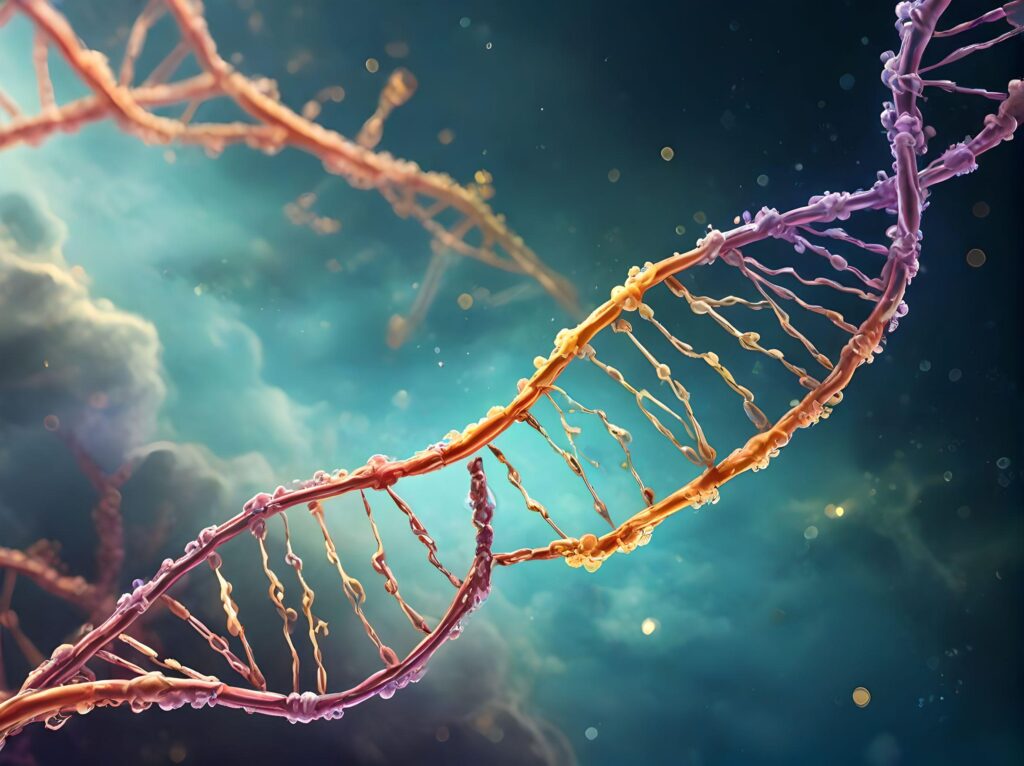DNA vs RNA: The Unsung Heroes of Life
DNA and RNA are two of the most important molecules in living things. They form the foundation of life’s incredible diversity, but they aren’t exactly the same. While they share some similarities, their key differences play vital roles in how our cells function. Let’s delve into the world of these microscopic marvels and see what makes them tick.
The Blueprint vs. The Messenger:
One key difference lies in their function. DNA, or deoxyribonucleic acid, acts as the blueprint for life. It stores our genetic information in a long, twisted ladder-like structure called the double helix. This information dictates everything from our eye color to our susceptibility to diseases [1]. RNA, or ribonucleic acid, on the other hand, is the messenger molecule. It carries instructions from DNA to the protein-building factories of the cell, called ribosomes [2]. These instructions, coded in a specific sequence of chemical bases, tell the ribosomes which amino acids to link together to create proteins, the workhorses of the cell [3].
Structural Tweaks, Big Differences:
Both DNA and RNA are built from smaller units called nucleotides. Each nucleotide consists of a sugar molecule, a phosphate group, and a nitrogenous base. Here’s where the first distinction pops up: DNA’s sugar molecule is deoxyribose, while RNA’s is ribose. This seemingly minor difference has a big impact. The extra hydroxyl group (OH) in ribose makes RNA more susceptible to breakdown, allowing for quicker turnover and flexibility in its roles [4].

Another key difference lies in the base composition. Both use adenine (A), guanine (G), and cytosine (C), but DNA uses thymine (T) while RNA utilizes uracil (U) [5]. These bases pair up with each other according to specific rules: A with T (or U in RNA) and C with G. This pairing is crucial for DNA replication and RNA’s ability to “read” the genetic code.
Location, Location, Location:
DNA is primarily found tucked away in the nucleus of the cell, where it’s safely guarded. RNA, however, is a busy molecule with multiple locations. Messenger RNA (mRNA) carries instructions from the nucleus to the ribosomes. Ribosomal RNA (rRNA) is a major component of ribosomes themselves, while transfer RNA (tRNA) fetches amino acids and delivers them to the ribosome based on the mRNA code [6].
Understanding these Differences is Key:
By understanding the distinct roles and structures of DNA and RNA, scientists can unravel the mysteries of gene expression and protein synthesis. This knowledge is fundamental in various fields, from developing new medicines to understanding the origins of life.
Further Exploration:
Want to dive deeper? Here are some research articles from PubMed to get you started:
- [1] The structure and function of the human genome [PubMed reference: 10454968]
- [2] Eukaryotic ribosomes at atomic resolution [PubMed reference: 12060084]
- [3] Transfer RNA [PubMed reference: 10600120]